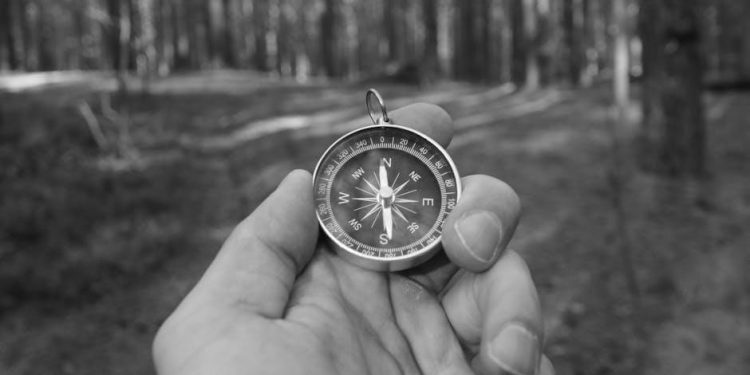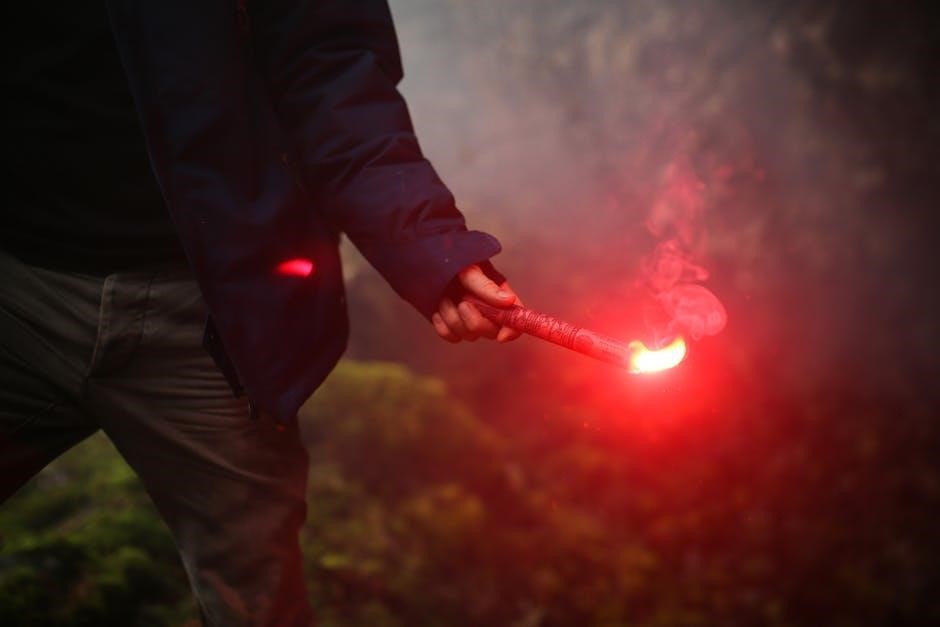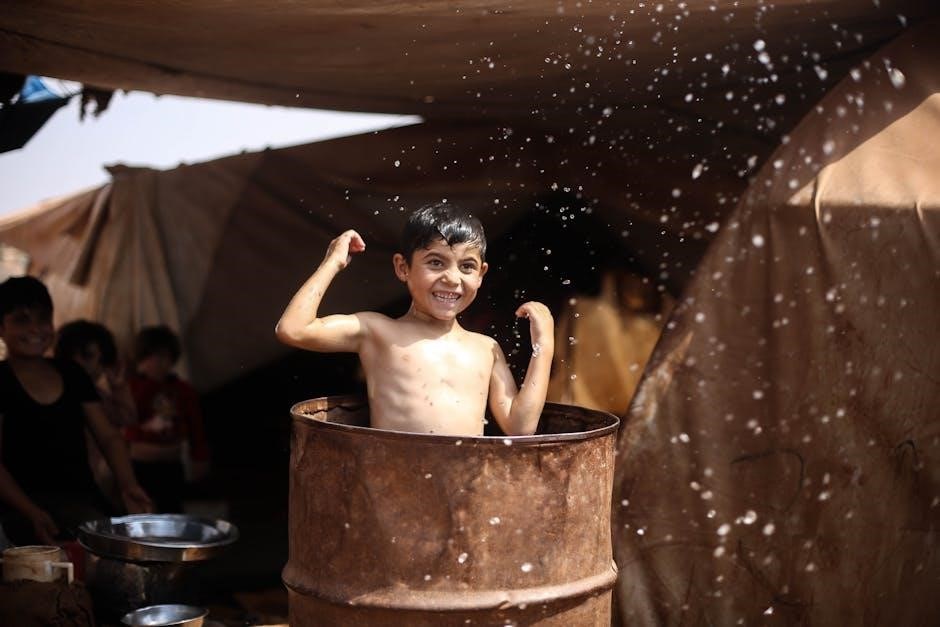
A survival guide is a comprehensive resource designed to help individuals navigate emergencies, wilderness situations, and unexpected challenges. It provides practical advice, essential skills, and strategies to stay safe and resilient in critical moments.
1.1 What is a Survival Guide?
A survival guide is a practical resource designed to equip individuals with the knowledge and skills needed to navigate emergencies, wilderness situations, and unforeseen challenges. It typically includes strategies for finding food and water, building shelter, starting fires, and signaling for help. These guides often cater to various environments, such as forests, deserts, or urban settings, and are tailored for different audiences, from outdoor enthusiasts to disaster preparedness. By focusing on essential techniques and tools, a survival guide aims to enhance resilience and increase the chances of staying safe until help arrives or conditions improve.
1.2 Importance of Having a Survival Guide
A survival guide is crucial for preparedness in emergencies, offering life-saving information and strategies. It equips individuals with the knowledge to stay safe during natural disasters, wilderness adventures, or urban crises. By providing clear instructions on essential skills, such as finding water, starting a fire, and signaling for help, a survival guide boosts confidence and resilience. It also serves as a mental toolkit, helping users remain calm and focused in high-stress situations. Whether for hiking, disaster preparedness, or everyday safety, a well-structured survival guide is an indispensable resource for anyone seeking to navigate challenges effectively and emerge unharmed.

The Rule of Threes in Survival
The Rule of Threes is a survival principle emphasizing that humans can survive three minutes without air, three days without water, and three weeks without food.
2.1 Understanding the Rule of Threes
The Rule of Threes is a fundamental survival principle that outlines the maximum time a person can survive without basic necessities. It states that humans can survive three minutes without air, three days without water, and three weeks without food. This rule helps prioritize survival efforts by focusing on the most critical needs first. Air is the most immediate requirement, as brain damage or death occurs within minutes without oxygen. Water follows, with severe dehydration setting in within days. Food, while essential, is the least urgent, as the human body can survive several weeks without it under the right conditions.
2.2 Applying the Rule of Threes in Different Scenarios
The Rule of Threes guides survival decisions in various situations. In a desert, water becomes critical, so locating shade and conserving sweat is essential. At sea, rationing water and signaling for help are priorities. In cold environments, shelter and fire-building take precedence to prevent hypothermia. Urban scenarios may focus on securing safe shelter and avoiding hazards. The rule adapts to context, emphasizing immediate needs. For example, in high-altitude conditions, air quality becomes the primary concern. By applying this framework, individuals can allocate resources effectively, ensuring they address the most urgent threats first. This adaptability makes the Rule of Threes a universal survival tool.
The 7 Survival Priorities
The 7 Survival Priorities provide a clear framework for addressing immediate needs in emergencies. They ensure safety, efficiency, and focus, helping individuals stay organized under stress.
3.1 The Priority List for Survival
The priority list for survival outlines essential steps to ensure safety and sustainability in emergencies. It typically starts with assessing immediate threats, followed by securing water, food, shelter, and signaling tools. Each item on the list addresses a critical need, aiming to prevent further risks and improve chances of rescue. Understanding this hierarchy helps individuals allocate resources effectively and maintain focus during crises; The list emphasizes mental clarity and practical actions, ensuring survivors can manage their environment and stay resilient until help arrives. This structured approach is universal, applicable to both wilderness and urban scenarios, making it a cornerstone of survival strategies.
3.2 Maintaining a Positive Mindset
Maintaining a positive mindset is crucial for survival, as it fosters resilience and clarity in dire situations. A calm and focused mind enables better decision-making, helping individuals stay proactive rather than reactive. Techniques such as deep breathing, visualization, and setting small achievable goals can help manage stress and anxiety. Staying optimistic boosts morale, preventing despair and hopelessness. Mental resilience is as vital as physical preparedness, ensuring individuals remain resourceful and determined to overcome challenges. A positive mindset also enhances the ability to adapt, think creatively, and persevere, ultimately increasing chances of survival and recovery.

Essential Survival Skills
Mastering essential survival skills like finding water, starting a fire, and building shelter is vital for staying alive in challenging environments. These skills ensure basic needs are met.
4.1 Finding and Purifying Water
Finding and purifying water is crucial for survival, as dehydration can set in quickly. Locate water sources like streams, rivers, or ponds, or collect rainwater or dew. Always purify water to remove contaminants. Boiling is the most reliable method, but sand filtration or solar disinfection can also work. Carry a portable filter or water purification tablets for convenience. Avoid stagnant water to prevent waterborne illnesses. Conservation is key—ration water and reduce waste. Learning these techniques ensures access to safe drinking water, essential for sustaining life in any survival situation.
4.2 Starting a Fire Without Modern Tools
Starting a fire without modern tools is a vital survival skill, providing warmth, light, and a way to cook food. Methods include friction techniques, such as using sticks or bows, solar fire starting with magnifying glasses, and flint-and-steel tools. Prepare tinder like dry leaves, grass, or bark, and add kindling gradually. Maintain airflow by arranging materials in a teepee or log cabin structure. Practice these techniques to master them, as fire can be a lifesaver in cold or wet conditions, boosting morale and ensuring survival. Always follow safety guidelines to avoid uncontrolled fires.
4.3 Building a Shelter
Building a shelter is a critical survival skill to protect against harsh weather and wildlife. Use natural materials like branches, leaves, and pine needles to construct lean-tos, debris huts, or snow shelters. Choose a dry, elevated spot away from standing water and windy areas. For a lean-to, create a frame with sturdy branches and cover it with leaves or grasses. Debris huts require a central pole and layers of sticks and foliage. Always ensure good ventilation and insulation to stay warm and dry. Maintaining a shelter requires regular repairs and reinforcement, especially in wet or snowy conditions, to ensure it remains safe and durable.

Survival Tools and Gear
Survival tools and gear are essential for staying safe in emergencies. A multi-tool, knife, rope, flashlight, emergency blanket, and compass are must-have items for any survival situation.
5.1 Must-Have Items in a Survival Kit
A well-prepared survival kit should include essential items to ensure safety and sustainability. Key components include a water filter or purification tablets, a multi-tool or knife, a first aid kit, an emergency blanket, a flashlight with extra batteries, a rope or paracord, fire-starting tools like matches or a ferro rod, a whistle for signaling, and a multi-use knife. These items are lightweight, versatile, and crucial for addressing immediate needs such as shelter, water, and signaling for help. Having these must-have items in a survival kit significantly increases your chances of staying safe and resilient during emergencies or wilderness situations.
5.2 Choosing the Right Multi-Tool
Selecting the right multi-tool is crucial for survival situations, as it provides versatility and convenience. Look for tools made from durable materials like stainless steel, ensuring longevity and reliability. A good multi-tool should include essential functions such as a knife, pliers, screwdriver, and can opener. Consider the size and weight, as portability is key in survival kits. Ergonomic design enhances usability, while additional features like wire cutters or saws can be beneficial. Popular brands like Leatherman and Victorinox offer high-quality options. Choose a multi-tool that balances functionality with ease of use, ensuring it meets your specific survival needs without unnecessary bulk.
5.3 Maintaining Your Survival Gear
Maintaining your survival gear is essential to ensure its effectiveness in critical situations. Regularly clean and inspect tools, such as knives, multi-tools, and fire starters, to prevent rust and damage. Lubricate moving parts to keep them functional, and sharpen blades to maintain their cutting efficiency. Store gear in a dry, protected environment to avoid deterioration. Additionally, check expiration dates on items like water purification tablets and replace them as needed. Routine maintenance ensures your survival gear remains reliable when you need it most. By staying proactive, you can extend the lifespan of your equipment and rely on it during emergencies.

Emergency First Aid in the Wild
Emergency first aid in the wild is crucial for treating injuries and preventing infections. It involves basic wound care, bleeding control, and splinting fractures to stabilize conditions until professional help arrives.
6.1 Basic First Aid Techniques
Basic first aid techniques are essential for managing injuries in the wild. Control bleeding by applying direct pressure with a clean cloth or bandage. Clean wounds with purified water or antiseptic wipes to prevent infection. Use topical antibiotics if available and cover wounds with sterile dressings. For fractures, immobilize the affected area with a splint. Treat burns by cooling them with clean water and covering loosely. Monitor vital signs and provide reassurance to the injured person. Knowing these techniques can significantly improve outcomes until professional medical help is available. Always prioritize cleanliness and stability to prevent further harm. Preparedness and practice are key to effective first aid in survival situations.
6.2 Managing Wounds and Injuries
Managing wounds and injuries in survival situations requires immediate attention to prevent infection and promote healing. Clean the wound with purified water or antiseptic wipes to remove dirt and bacteria. Apply a topical antibiotic ointment if available and cover the wound with a sterile dressing or clean cloth. Monitor for signs of infection, such as redness, swelling, or pus, and change dressings daily. For deep wounds, use sutures or butterfly bandages to close them. Elevate injured limbs to reduce swelling. Apply a tourniquet only in extreme cases of severe bleeding. Use cold compresses or ice packs to reduce swelling and pain. Natural remedies like honey can also act as antiseptics. Always prioritize cleanliness to avoid complications.
6.3 Mental Health and Stress Management
Mental health and stress management are critical components of survival. A positive mindset helps individuals stay focused and resilient during crises. Techniques like deep breathing, meditation, and visualization can reduce stress and anxiety. Establishing a routine and setting small, achievable goals can provide a sense of purpose. It’s important to acknowledge emotions but not let fear or panic overwhelm decision-making. Maintaining hope and fostering a growth mindset are essential for long-term survival. Building trust within a group and sharing responsibilities can alleviate mental strain. Remember, survival is as much about mental fortitude as it is about physical preparedness.

Navigation Techniques
Navigation is crucial for survival, helping individuals find food, water, and safety. It relies on reading natural signs, using tools, and staying adaptable to surroundings and conditions.
7.1 Reading Natural Signs for Navigation
Reading natural signs is a vital skill for navigation, allowing individuals to determine direction and location without modern tools. The sun’s position, stars like the North Star, and natural landmarks provide reliable guidance. Moss often grows on the north side of trees, while animal tracks may indicate water sources. Understanding these signs helps survivors move purposefully, conserving energy and resources. Additionally, recognizing patterns in terrain, such as ridges or valleys, aids in mapping surroundings. This timeless skill enhances navigation accuracy and boosts confidence in wilderness environments, making it an essential component of any survival strategy.
7.2 Using a Compass Effectively
A compass is an essential navigation tool that helps determine direction accurately. To use it effectively, hold it level and steady, ensuring the magnetic needle aligns with the magnetic north indicator. Rotate the bezel ring to set your desired direction, then follow the bearing. Landmarks can help verify your route. Always account for magnetic declination, the difference between magnetic and true north, for precise navigation. Practice using a compass in various terrains to build proficiency. This skill is crucial for staying on course in wilderness environments, especially when natural signs are unclear or GPS devices are unavailable.
7.3 GPS Navigation Basics
GPS navigation is a modern tool that relies on satellite signals to determine precise locations. To use it effectively, turn on the device, wait for satellite acquisition, and input your destination as waypoints. Save routes and tracks to retrace your path later. Digital maps can enhance navigation by displaying terrain features. Always carry extra batteries, as GPS devices consume power quickly. While GPS is reliable, it’s essential to combine it with map-reading skills for situations where technology fails. Understanding GPS basics improves navigation accuracy and confidence in wilderness survival scenarios.

Wilderness Survival Tips
Stay calm, find or purify water, build a shelter using natural materials, and use fire for warmth and signaling. Conserve energy and stay visible to rescuers.
8.1 Staying Warm in Cold Environments
Staying warm in cold environments is crucial for survival. Dress in layers to trap body heat, using breathable base layers and insulating materials like wool or fleece. Avoid cotton as it retains moisture. Use a waterproof outer layer to protect against wind and rain. Find or create a shelter, such as a snow trench or lean-to, to shield from harsh conditions. Insulate your bed with leaves, grass, or pine needles. Keep your head and hands covered, as significant heat loss occurs there. Stay dry by removing wet clothing and avoid overexertion, which can lead to sweating. Build a fire if possible, but ensure it’s safe and controlled.
8.2 Signaling for Help
Signaling for help is a critical survival skill, especially in remote areas. Use visible signals like bright clothing, smoke, or reflective objects during the day. At night, build a fire or use a flashlight to create a beacon. Whistles are effective; three short blasts signal distress. Create large, visible markers such as “HELP” or “SOS” using natural materials like rocks or branches. Stay near your shelter to conserve energy and increase visibility to rescuers. Avoid overexertion and ensure your signals are consistent and easy to spot. Preparation and visibility are key to being noticed and rescued swiftly in emergency situations.

Urban Survival Strategies
Urban survival requires understanding your environment, securing resources, and staying informed. Utilize city infrastructure wisely, stay aware of threats like crowds, and maintain cautious use of technology for safety.
9.1 Finding Food and Water in the City
In urban survival, securing food and water is crucial. Churches, community centers, and food banks often provide aid. Public water fountains and hydrants can be reliable sources. Scavenge safely, avoiding expired or spoiled items. Use apps or maps to locate nearby resources. Be cautious when approaching strangers for help, as trust must be earned. Always prioritize water safety, using purification methods if unsure. Familiarize yourself with urban landmarks and potential supply hubs. Urban environments offer unique opportunities for resource gathering, but require vigilance and strategic planning to navigate safely and effectively.
9.2 Avoiding Dangers in Urban Areas
Urban survival requires staying vigilant and aware of potential threats. Avoid poorly lit or deserted areas, especially at night. Stay informed about local crime hotspots and civil unrest. Trust your instincts and keep a low profile to avoid attracting unwanted attention. Learn to navigate using landmarks and mental maps to stay oriented. Be cautious when approaching strangers, as not everyone may have good intentions. Keep emergency contacts handy and have a backup plan for safe shelter. Stay quiet and observant in crowded spaces to avoid drawing suspicion. Always plan escape routes and know the nearest safe zones. Urban dangers are diverse, so adaptability and awareness are key to staying safe.

Legal Considerations in Survival
Understanding legal restrictions is crucial for survival. Know local laws to avoid illegal actions, ensure legal weapon carry, and respect property rights to stay compliant and safe.
10.1 Understanding Legal Restrictions
Understanding legal restrictions is vital for survival. Laws vary by location, and ignorance can lead to severe consequences. Familiarize yourself with local regulations regarding firearm use, trespassing, and foraging. Knowing what is legally permissible ensures you avoid unintended legal issues. For instance, collecting firewood in protected areas may be illegal. Legal mistakes can escalate survival situations, making it harder to stay safe. Always research and understand the legal framework of your environment to avoid violations. This knowledge is a critical component of responsible survival practices, helping you navigate challenges while remaining within the bounds of the law.
10.2 Carrying Weapons Legally
Carrying weapons legally is crucial for survival while adhering to the law. Always obtain necessary permits for firearms, knives, or other defensive tools. Research local, state, and federal regulations to ensure compliance. Concealed carry laws vary widely, so understand the rules in your area. Open carry may be restricted in certain zones, such as schools or government buildings. Legal weapon transport methods, like locking firearms in a case, are often required. Violating these laws can result in fines, arrests, or confiscation of gear. Stay informed to avoid legal complications and ensure your safety measures remain lawful. Proper legal compliance is key to responsible weapon use in survival situations.

Community and Support Networks
Community and support networks are vital in survival, offering shared resources and mutual aid. Building strong, reliable connections ensures collective strength during crises.
11.1 Building a Support Network
Building a support network is crucial for survival, as it fosters collaboration and resource sharing. Trust and communication are key to creating a reliable group. Each member brings unique skills, such as medical expertise or navigation knowledge, enhancing collective resilience. Regular meetings and shared responsibilities strengthen bonds. A well-coordinated network ensures everyone is prepared for emergencies, with clear communication plans and designated meeting points. This collective effort not only aids in immediate crises but also provides long-term support, ensuring the community thrives. A strong support network is a vital asset for overcoming challenges and maintaining stability in uncertain situations.
11.2 The Role of Community in Survival
A strong community plays a vital role in survival by fostering cooperation and shared resources. Collective knowledge and skills within a group enhance problem-solving and adaptability. Communities provide emotional support, reducing stress and maintaining morale during crises. Shared responsibilities, such as resource gathering and security, lighten individual burdens. A united front also deters potential threats, ensuring safer environments. Additionally, communities encourage knowledge sharing, preserving essential survival techniques. This collective strength not only aids in immediate survival but also lays the groundwork for long-term recovery and rebuilding. A cohesive community is often the backbone of resilience in challenging situations.